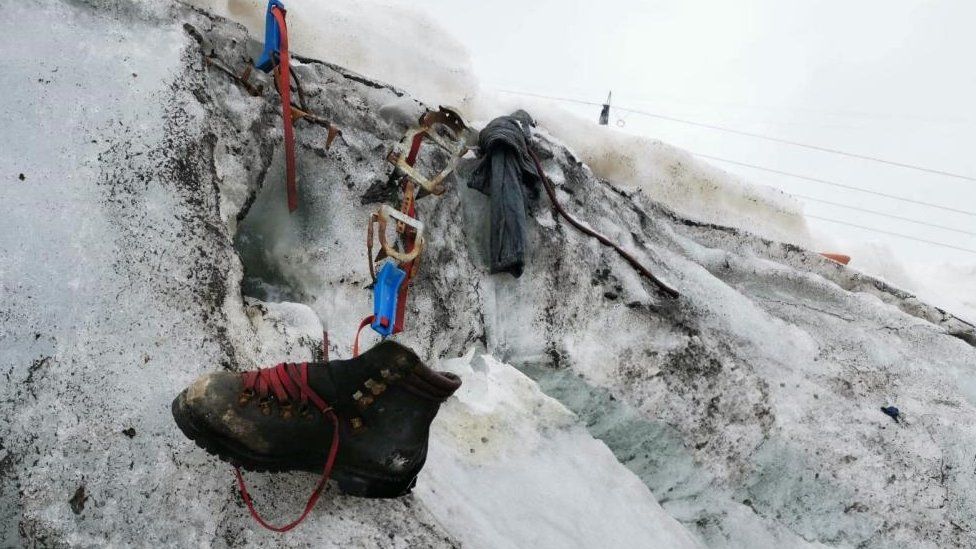Human remains found on a glacier close to Switzerland’s famous Matterhorn have been confirmed to be the body of a German climber missing since 1986.
The discovery is the latest in a number of long held secrets that the Alpine glaciers, now rapidly shrinking due to climate change, have revealed.
The body was discovered earlier this month by climbers crossing the Theodul glacier above Zermatt.
They noticed a hiking boot and crampons emerging from the ice.
DNA analysis showed the body to be that of a German climber, who disappeared 37 years ago. A huge search and rescue operation at the time failed to find any trace of him.
Police did not name the climber but said he was aged 38 when he went missing during a hike.
The Theodul glacier, like glaciers across the Alps, has shown a marked retreat in the last few years. It is part of Zermatt’s famous year round ski region, the highest in Europe.
But the alpine ice fields are especially sensitive to global warming. Until the 1980s the Theodul was still connected to its neighbour – the Gorner glacier – but the two have now split apart.
Almost every summer, the melting ice reveals something, or someone, lost for decades. Last year the wreckage of a plane that crashed in 1968 emerged from the Aletsch glacier.
- The coming of the glacier men
In 2014 the body of missing British climber Jonathan Conville was discovered by a helicopter pilot who spotted something unusual while delivering supplies to a mountain refuge on the Matterhorn – Switzerland’s most famous peak.
Mr Conville had been missing since 1979. His family, who had spent decades not knowing his fate, described finally being able to be sure that he had died in an environment he loved as “bittersweet”.
A year later, the bodies of two Japanese climbers were discovered at the edge of the Matterhorn glacier. They had gone missing in a snowstorm in 1970.
Last year the melting ice even changed the border between Switzerland and Italy. The frontier had originally been set at the drainage divide – the point that meltwater runs down towards one country or the other.
The shrinking glacier meant the position of the drainage divide shifted. The famous Rifugio Guide del Cervino, an Italian mountain lodge much loved by skiers and hikers, is now technically in Switzerland, and delicate negotiations between the Swiss and Italian governments have been taking place to decide how to redraw the border.
Your device may not support this visualisation

But the melting ice has consequences much greater than a diplomatic spat over borders, or the discovery of long lost climbers.
Alpine glaciers are key to Europe’s environment; the winter snow they store fills European rivers such as the Rhine and the Danube, providing water for crops, or for cooling nuclear power stations. Both this year and last, water levels in the Rhine have at times been too low for the freight barges that carry supplies from Holland down through Germany to Switzerland.
The meltwater also cools the rivers. Without the cooling effect, the water becomes too warm, and fish die.
Almost exactly a year ago, Swiss glacier experts were shocked by the extent of the ice retreat; the glaciers had lost half their volume since 1931, a far faster shrinkage than scientists had predicted. At that rate, almost all the Alpine glaciers would be gone by the end of this century.
But that was last summer. In 2023, Switzerland had one of its hottest, driest Junes. The first three weeks of July have been, globally, the hottest ever recorded. In August and September, the glacier experts will be measuring the ice again, and they fear what they will find.
Related Topics
- Mountaineering
- Alps
- Free climbing
- Switzerland
